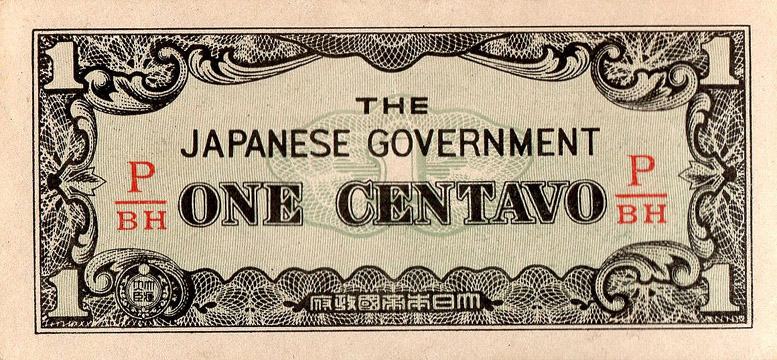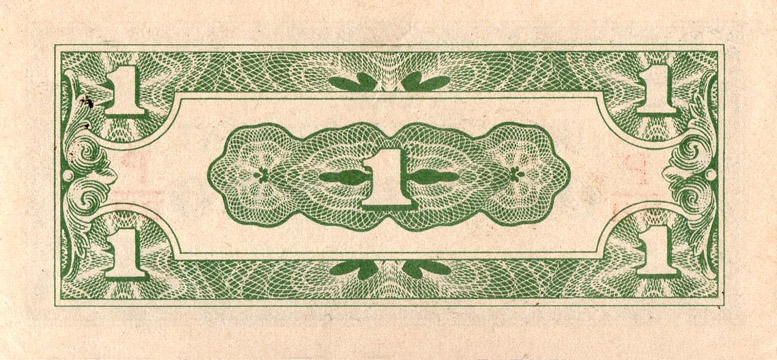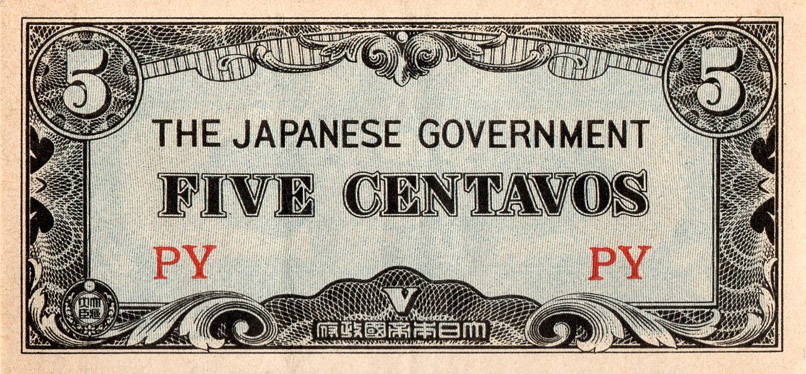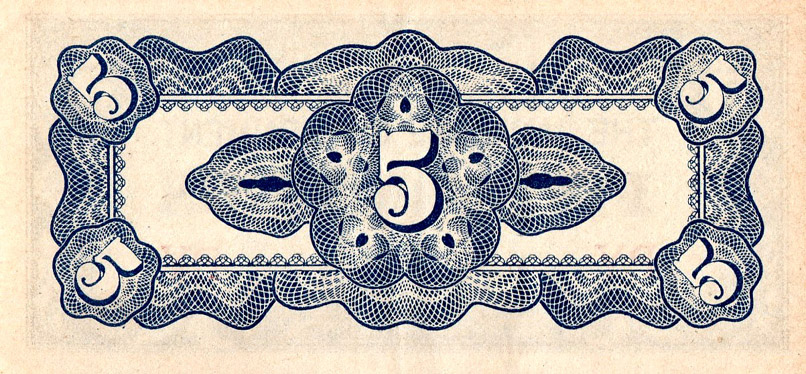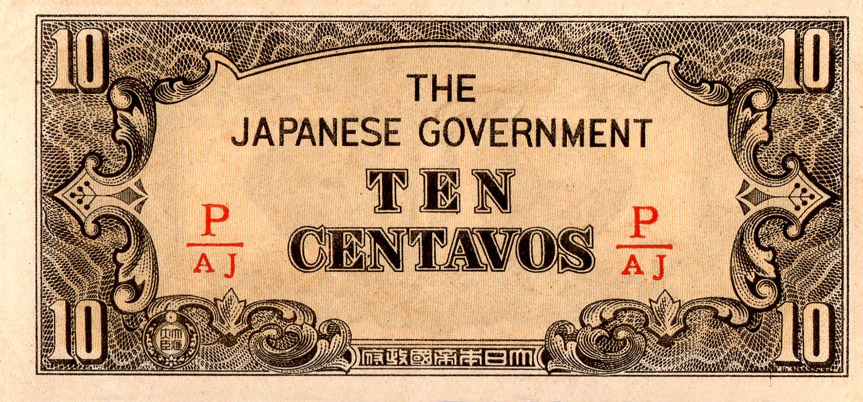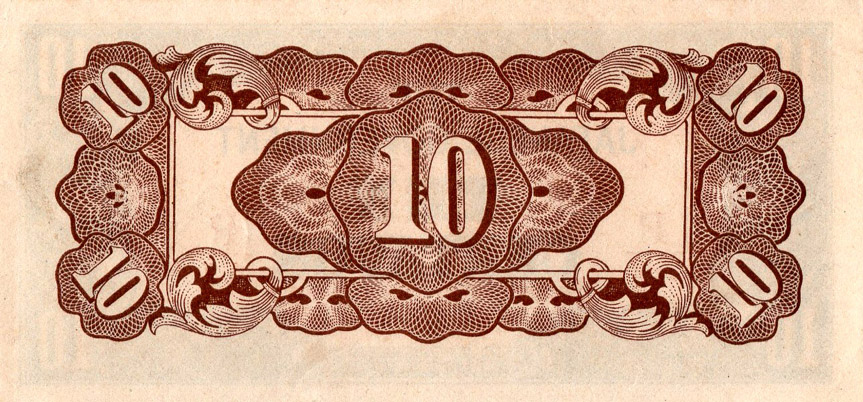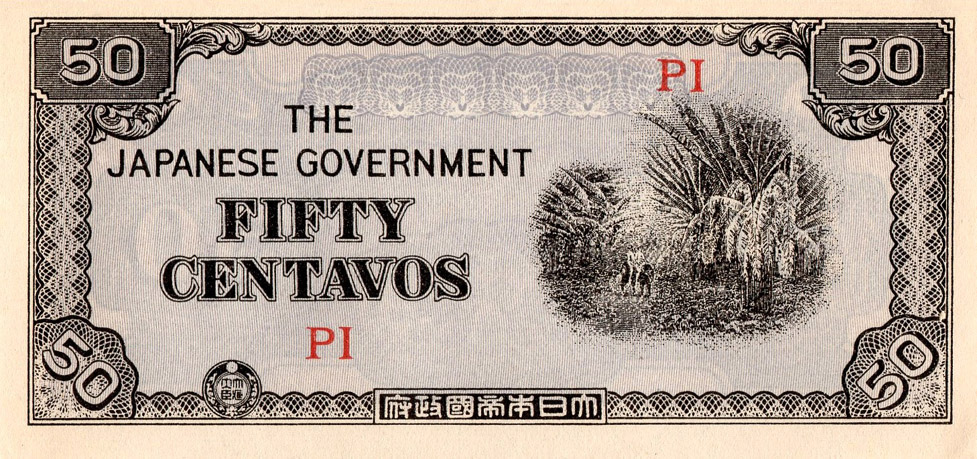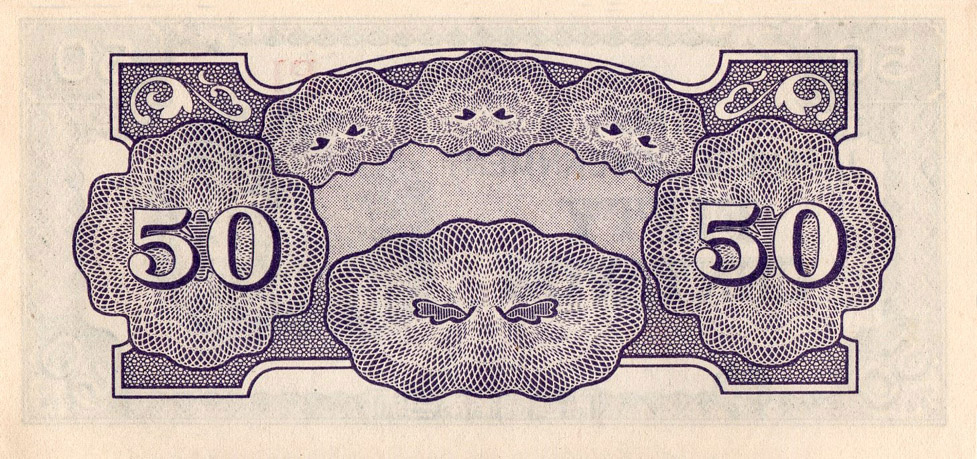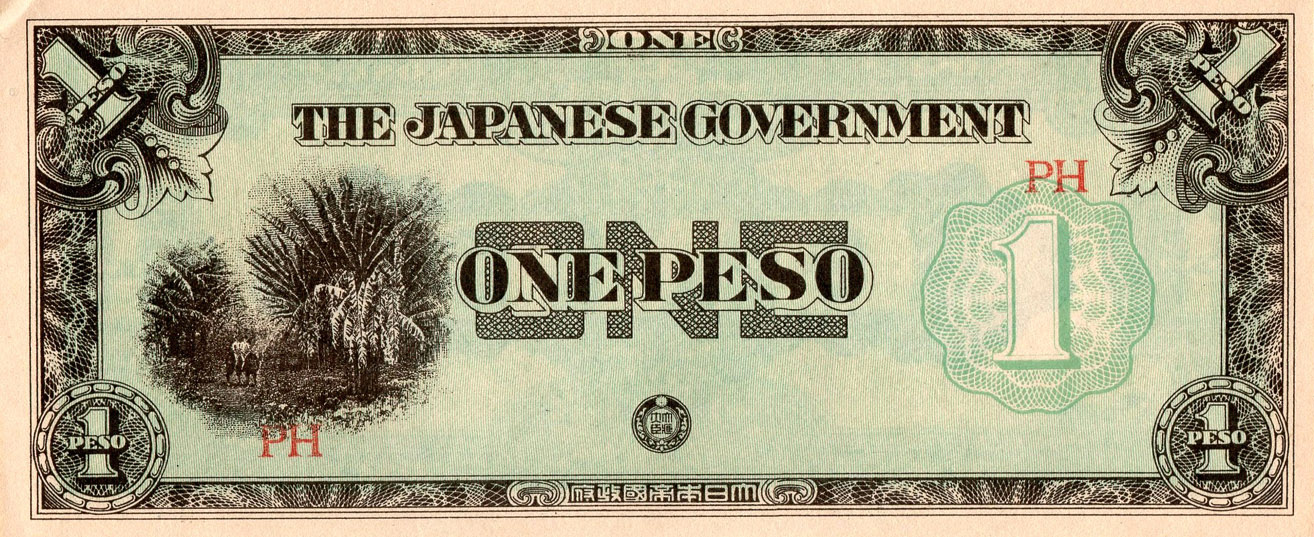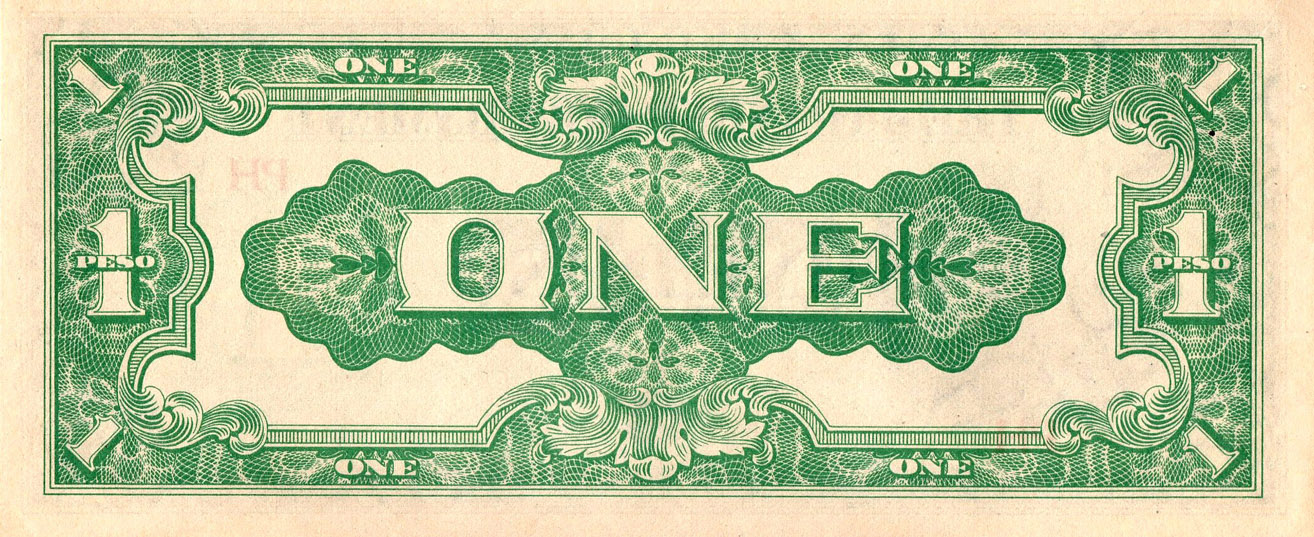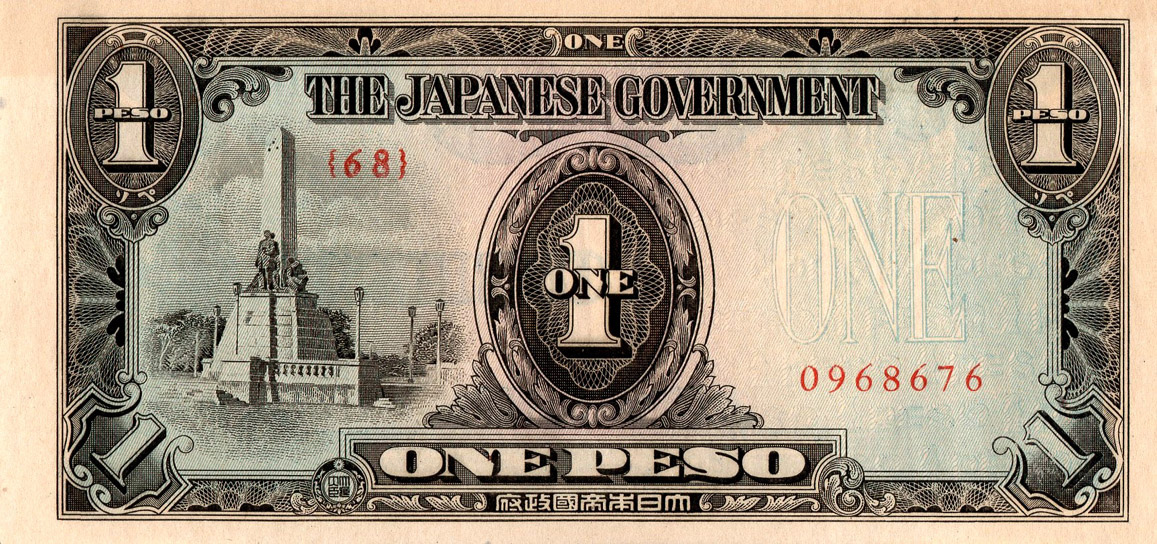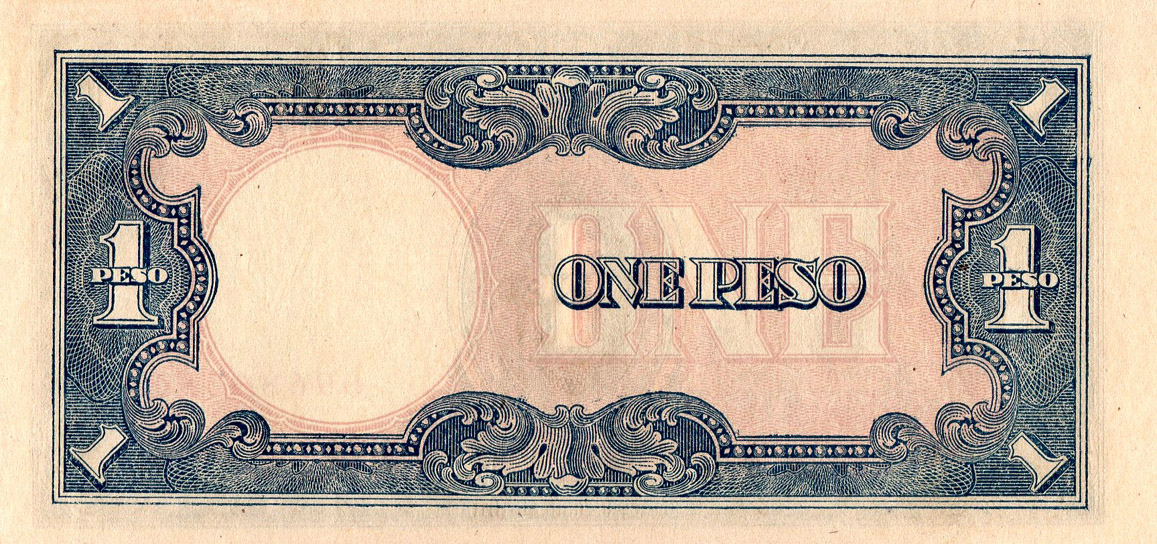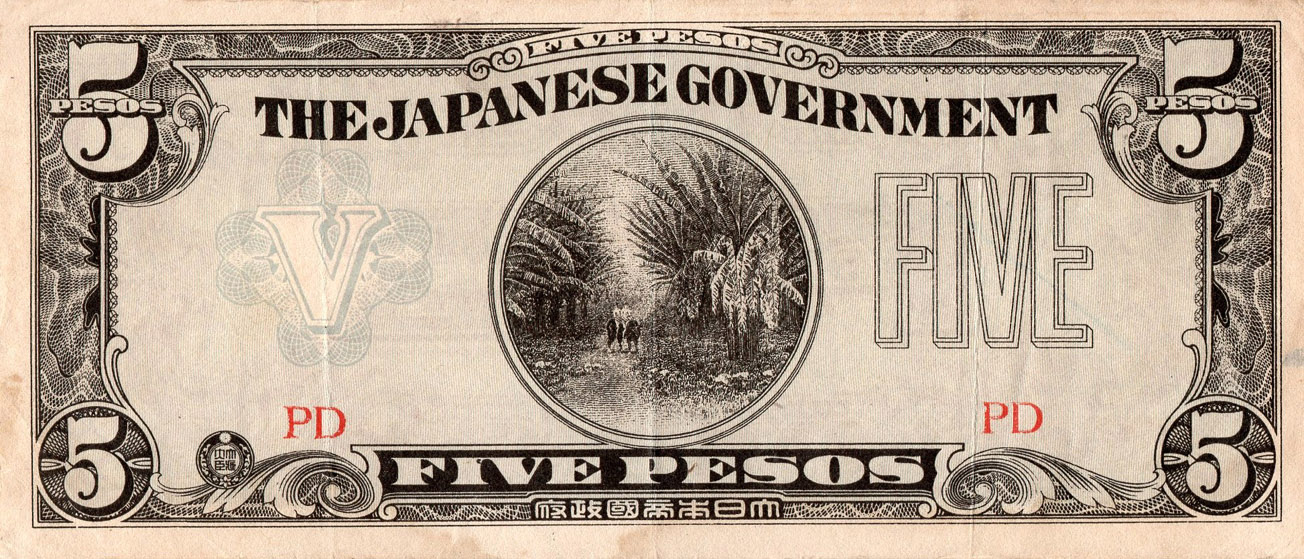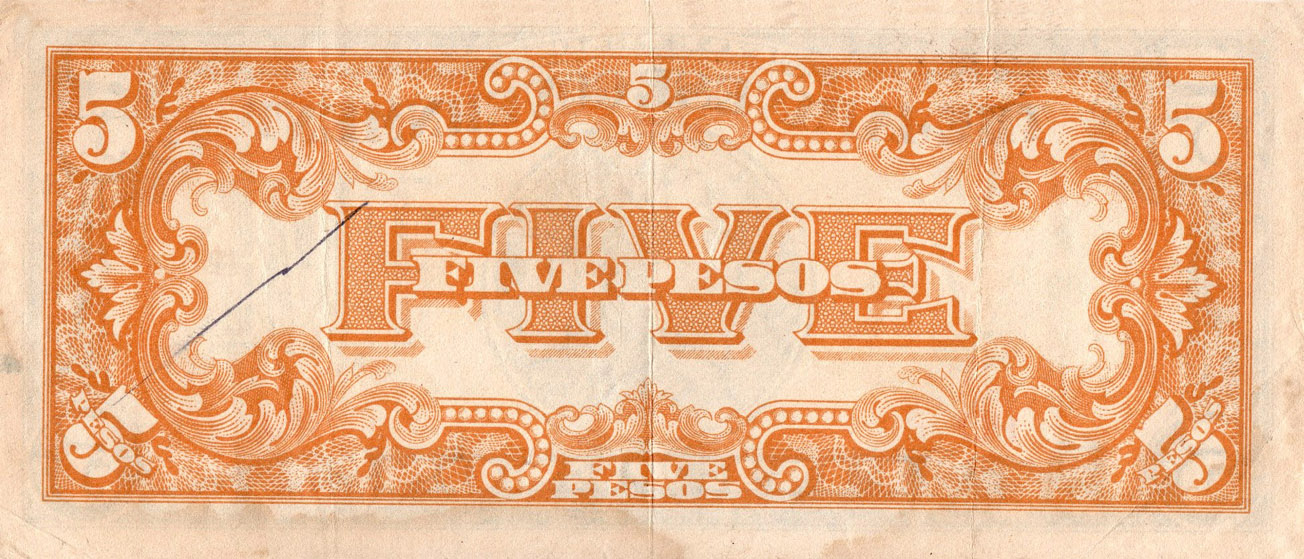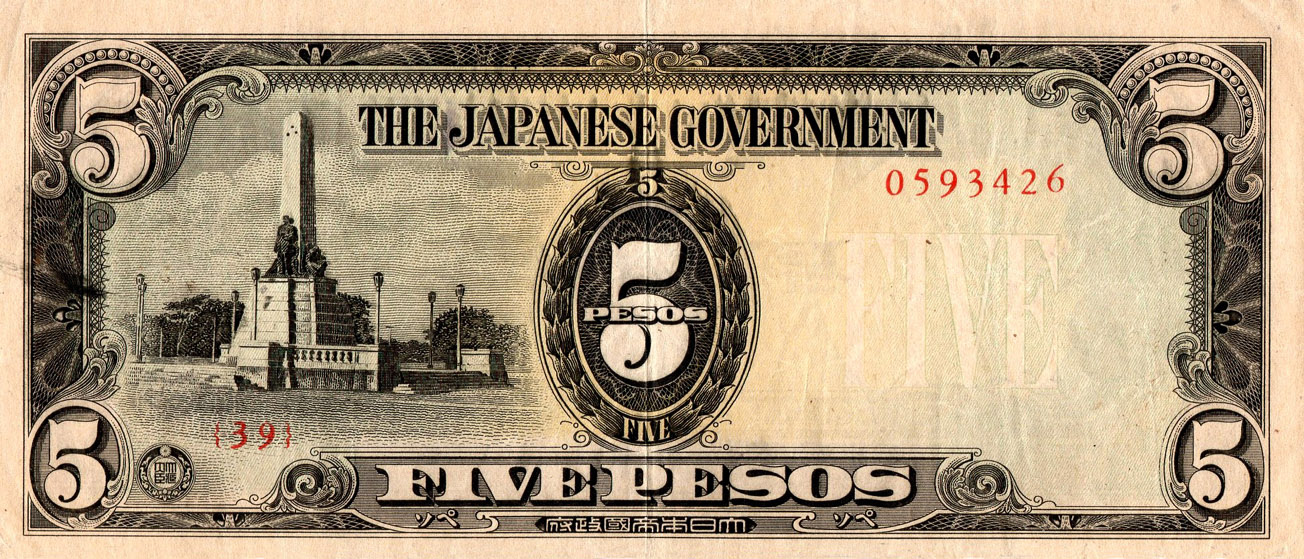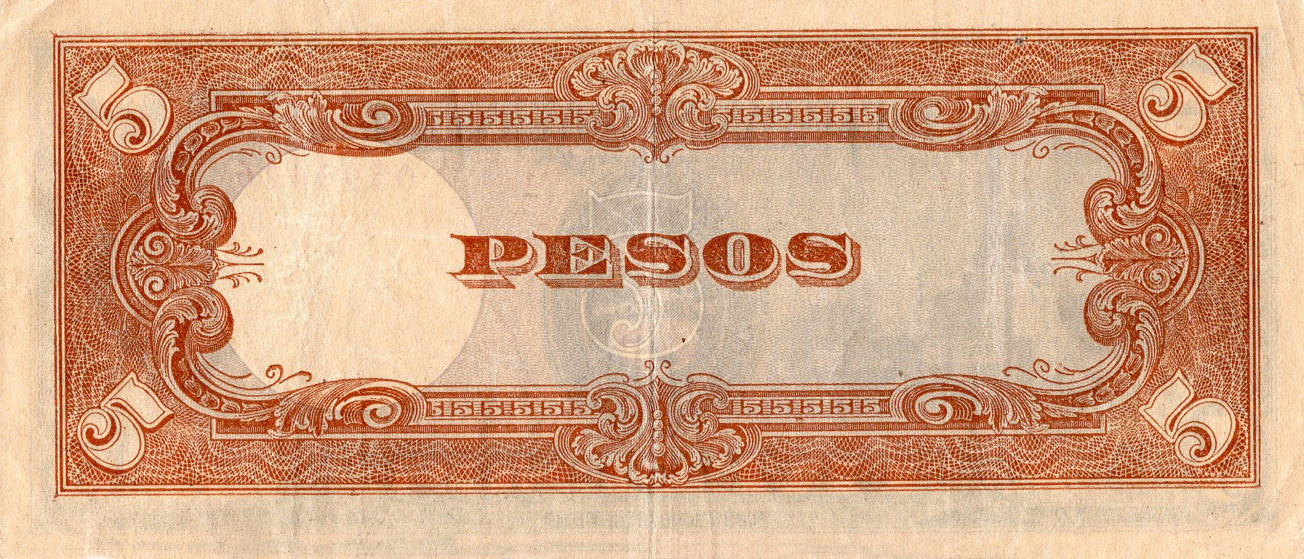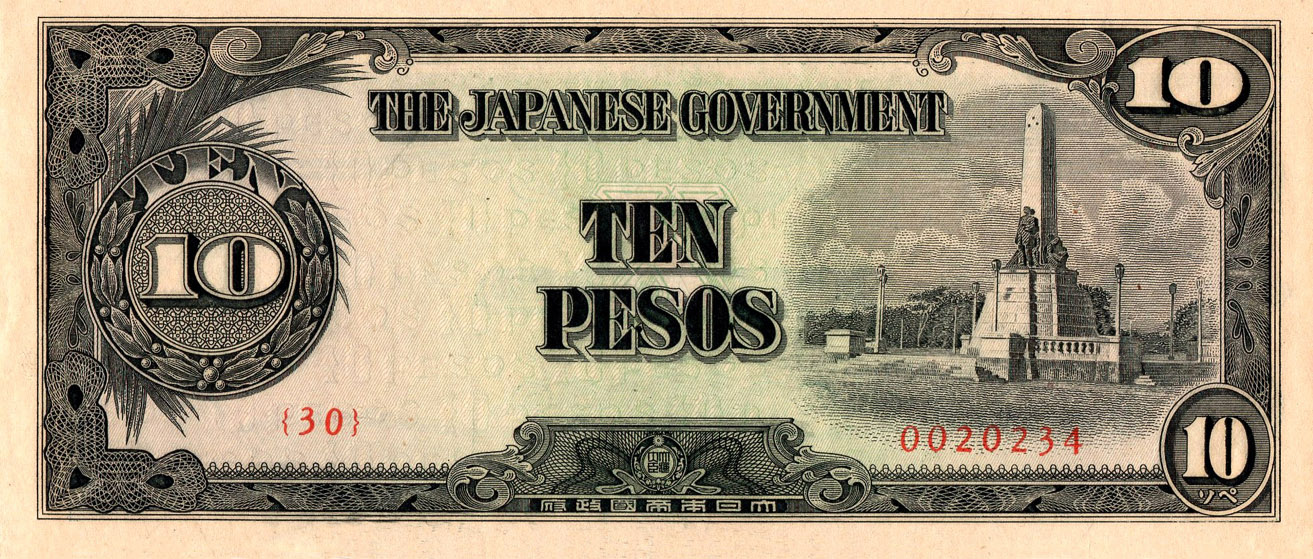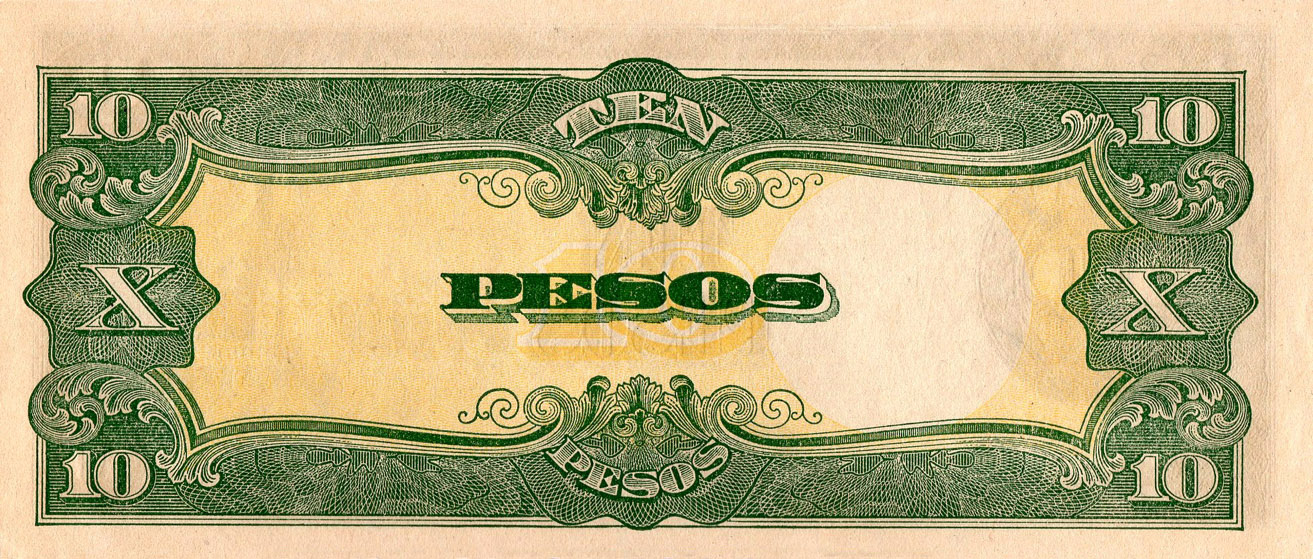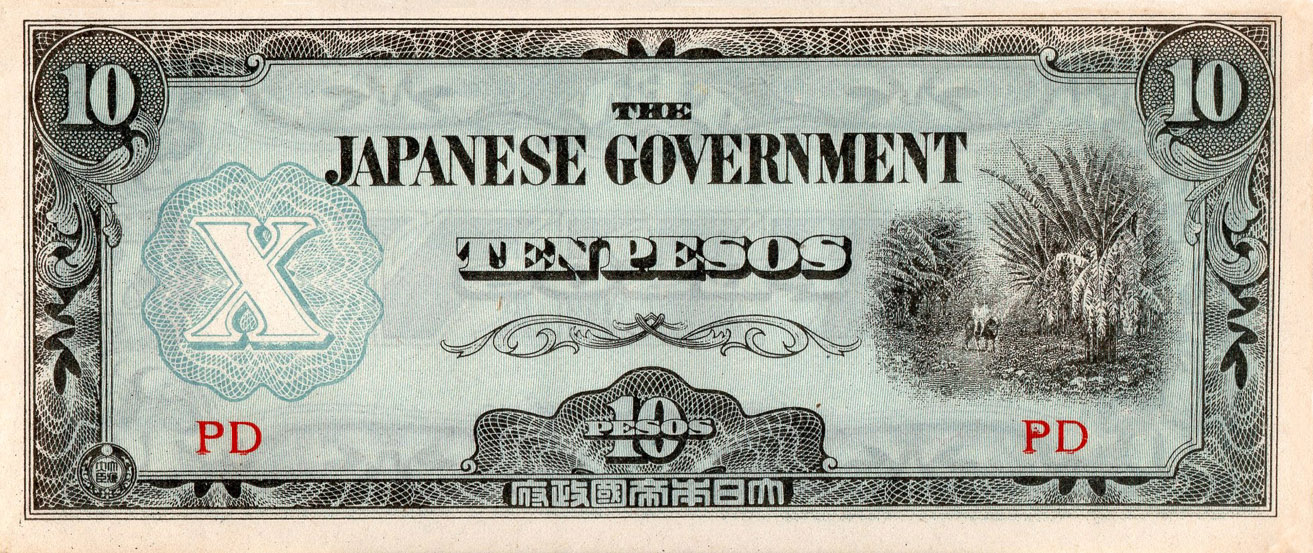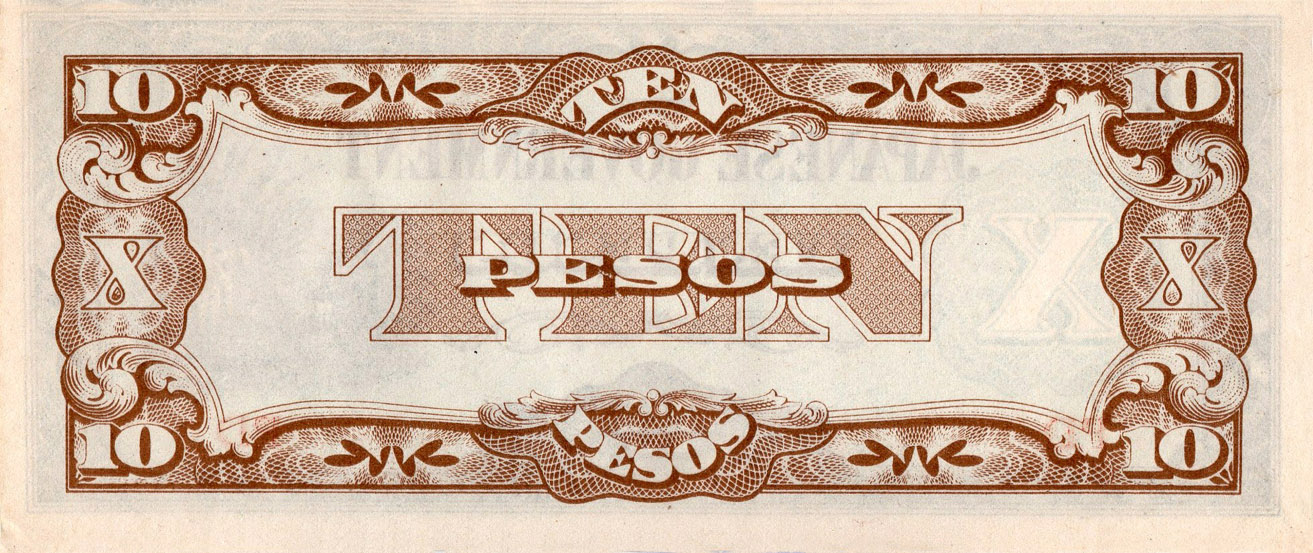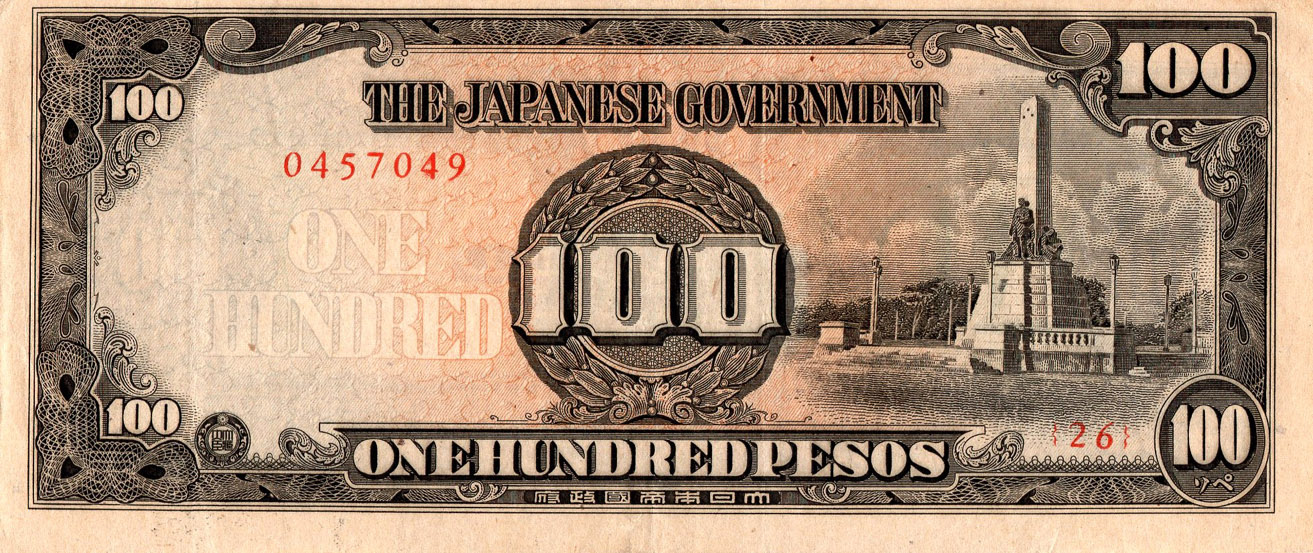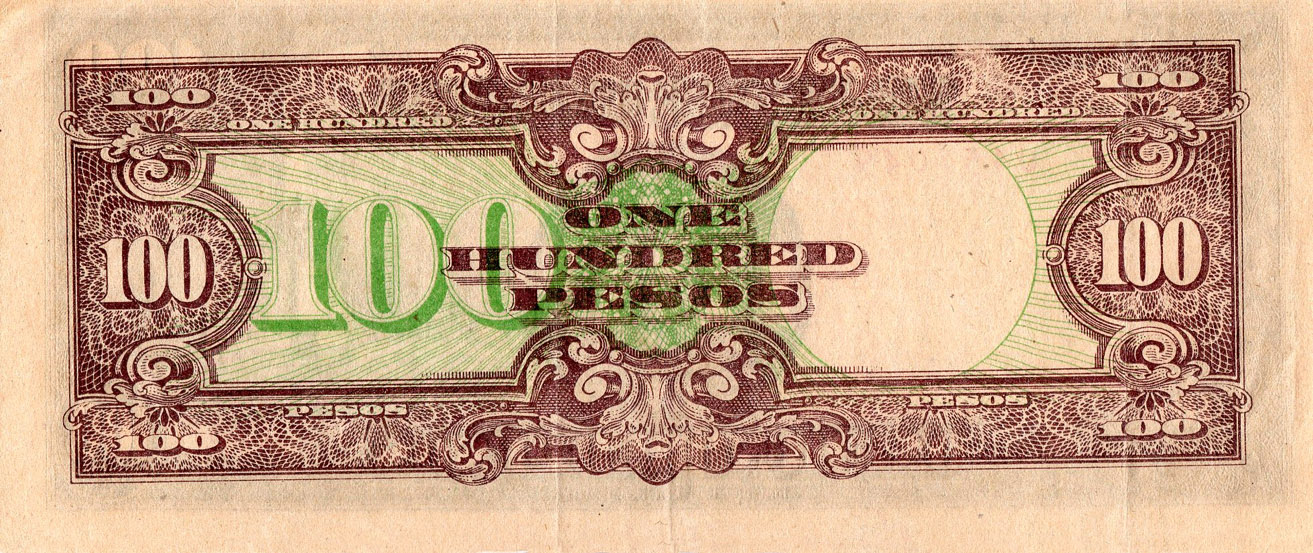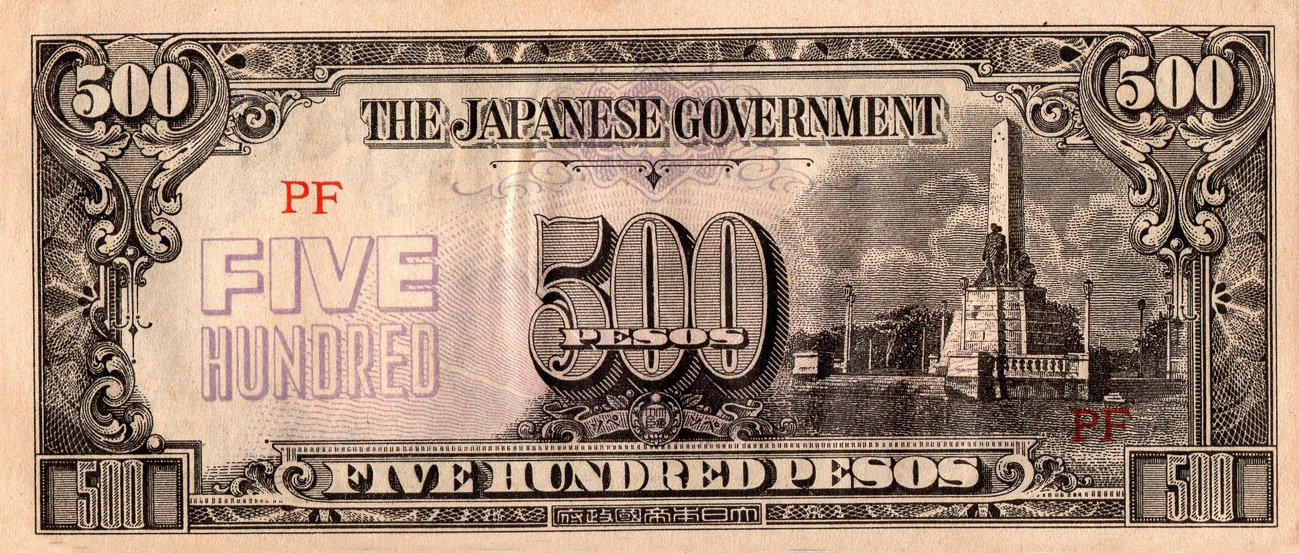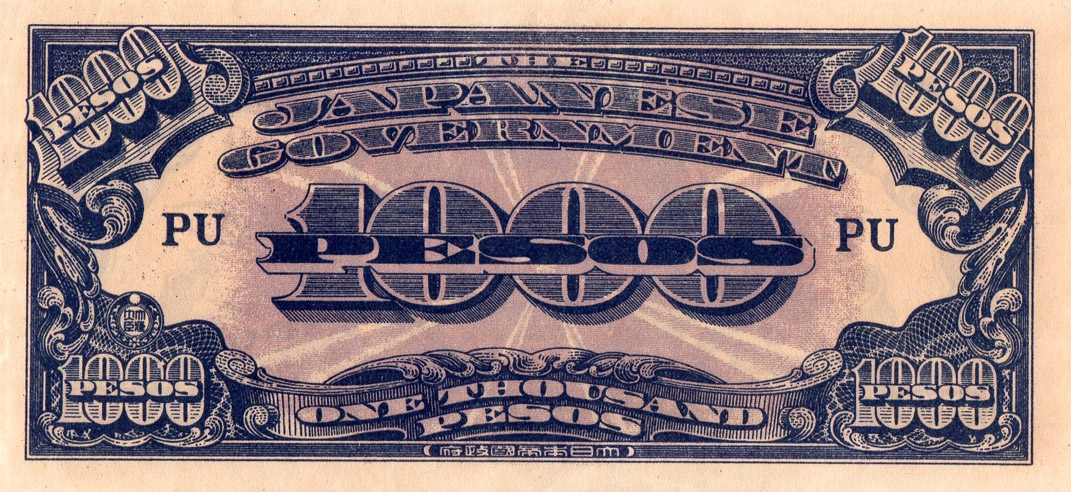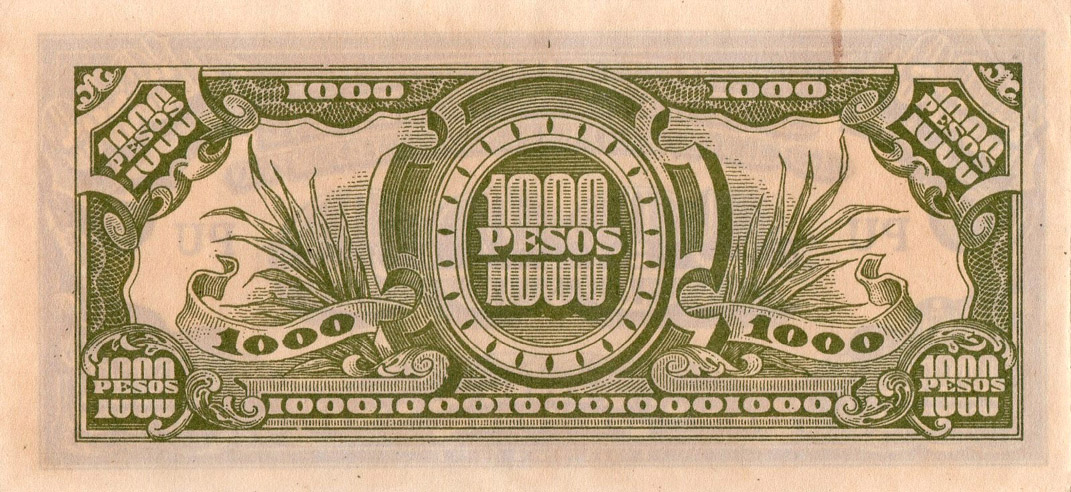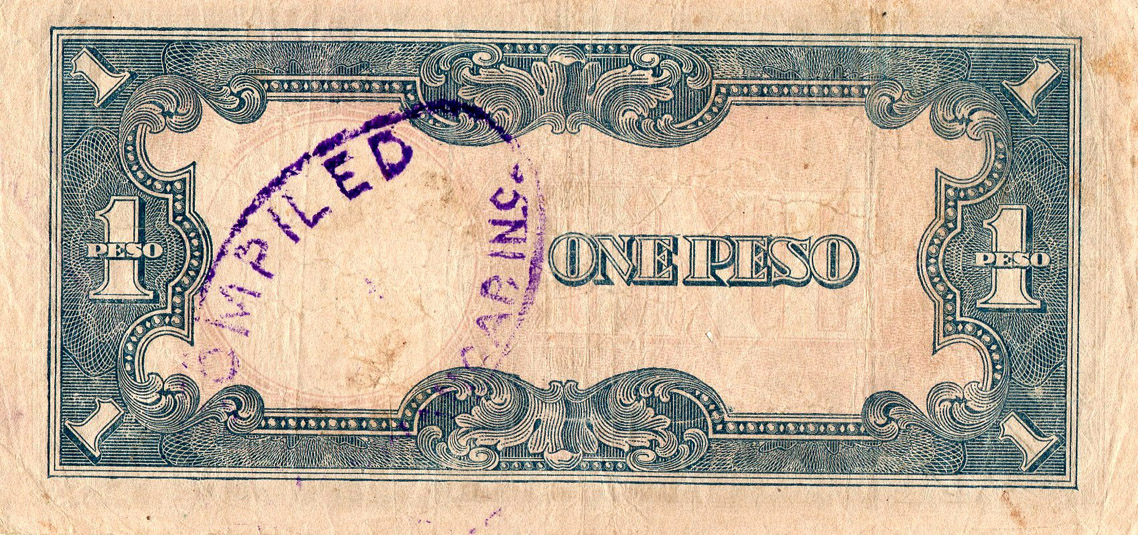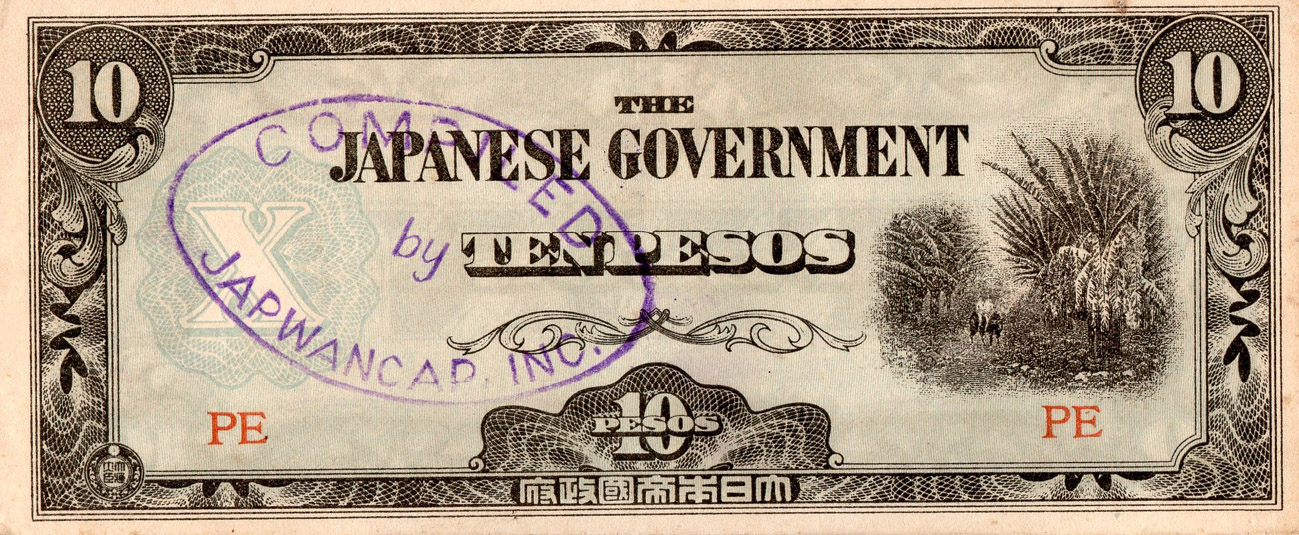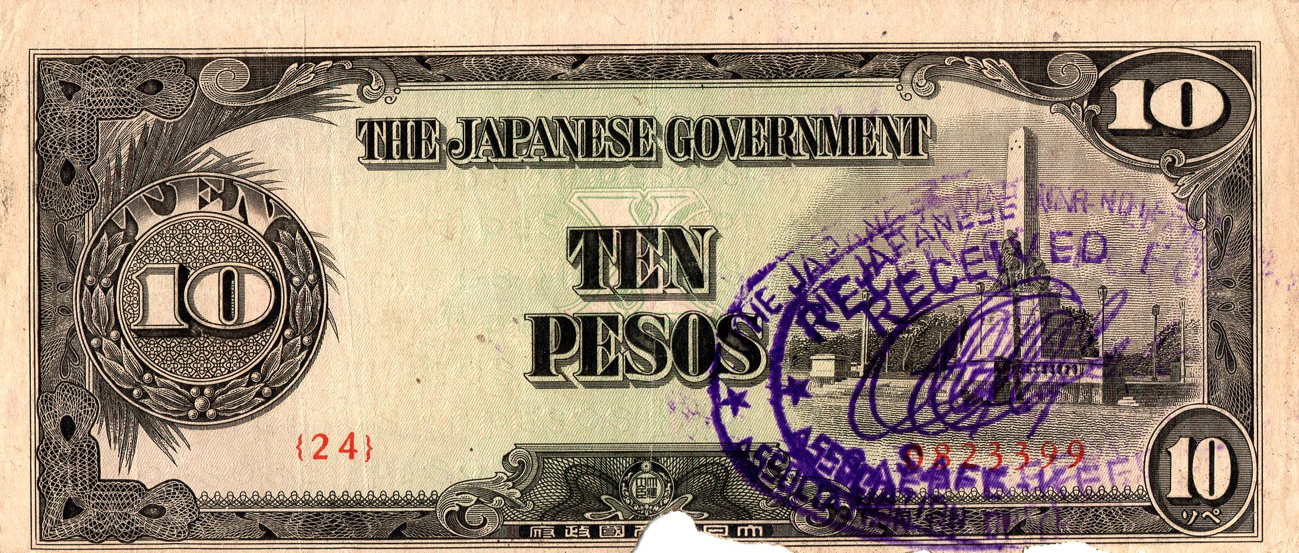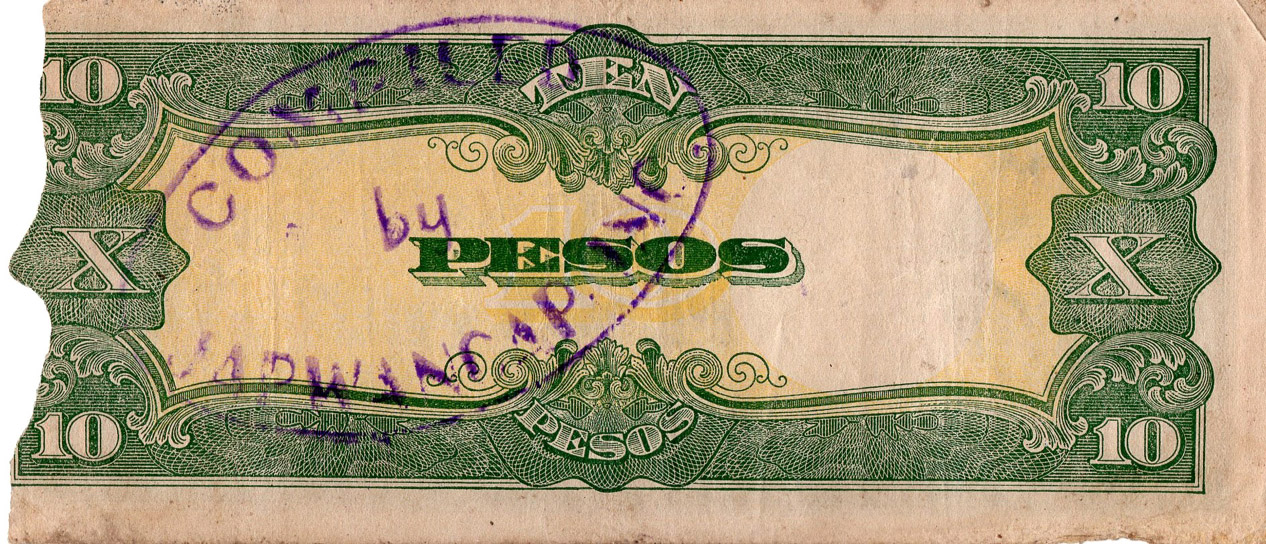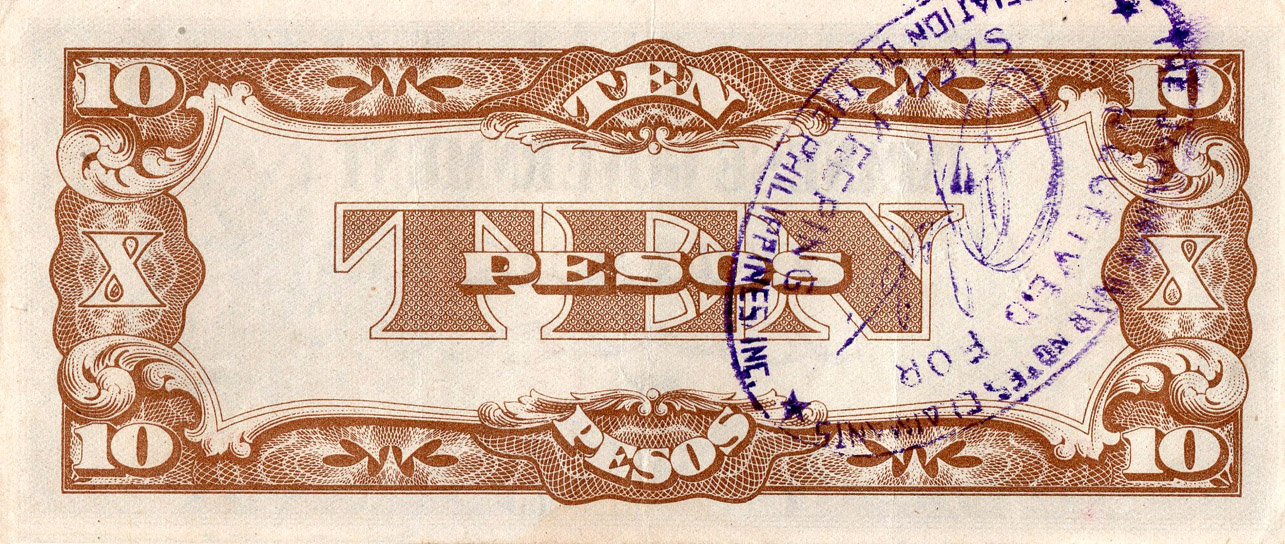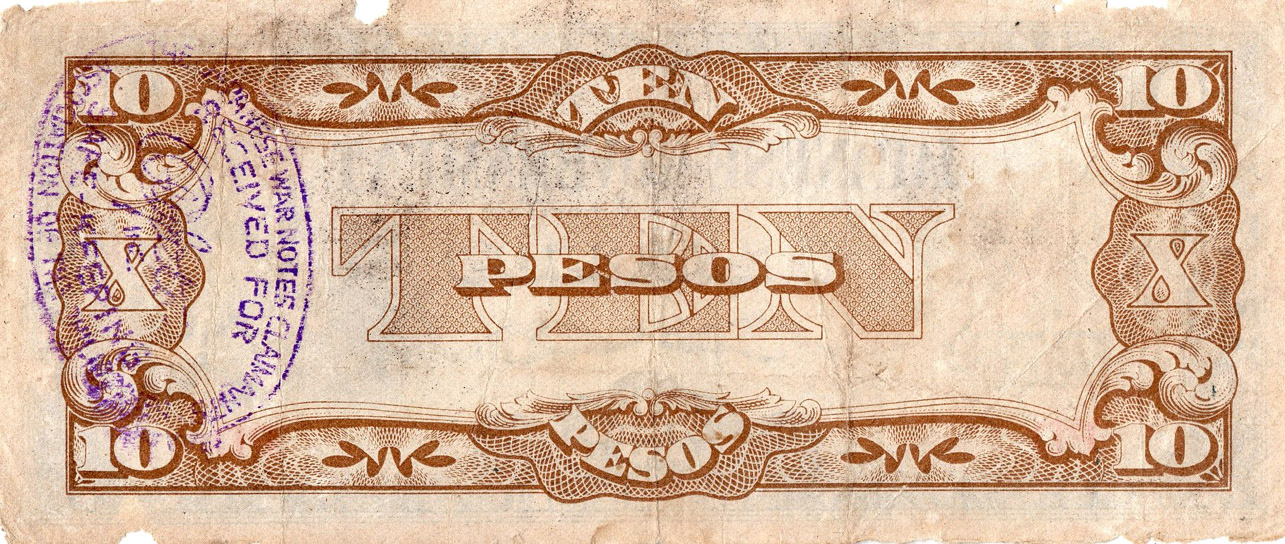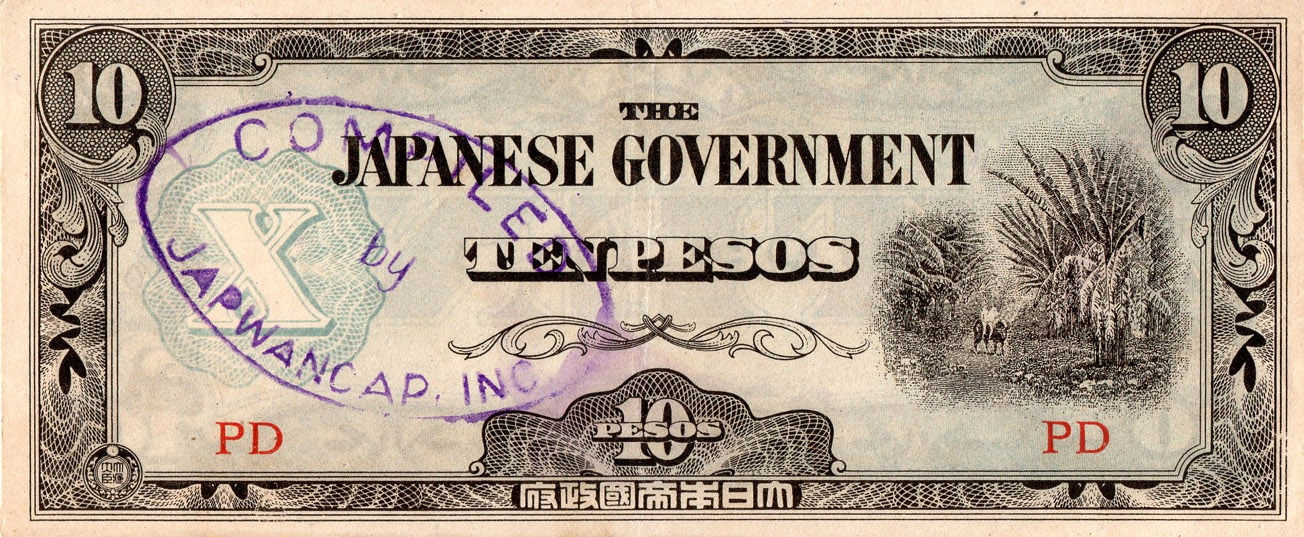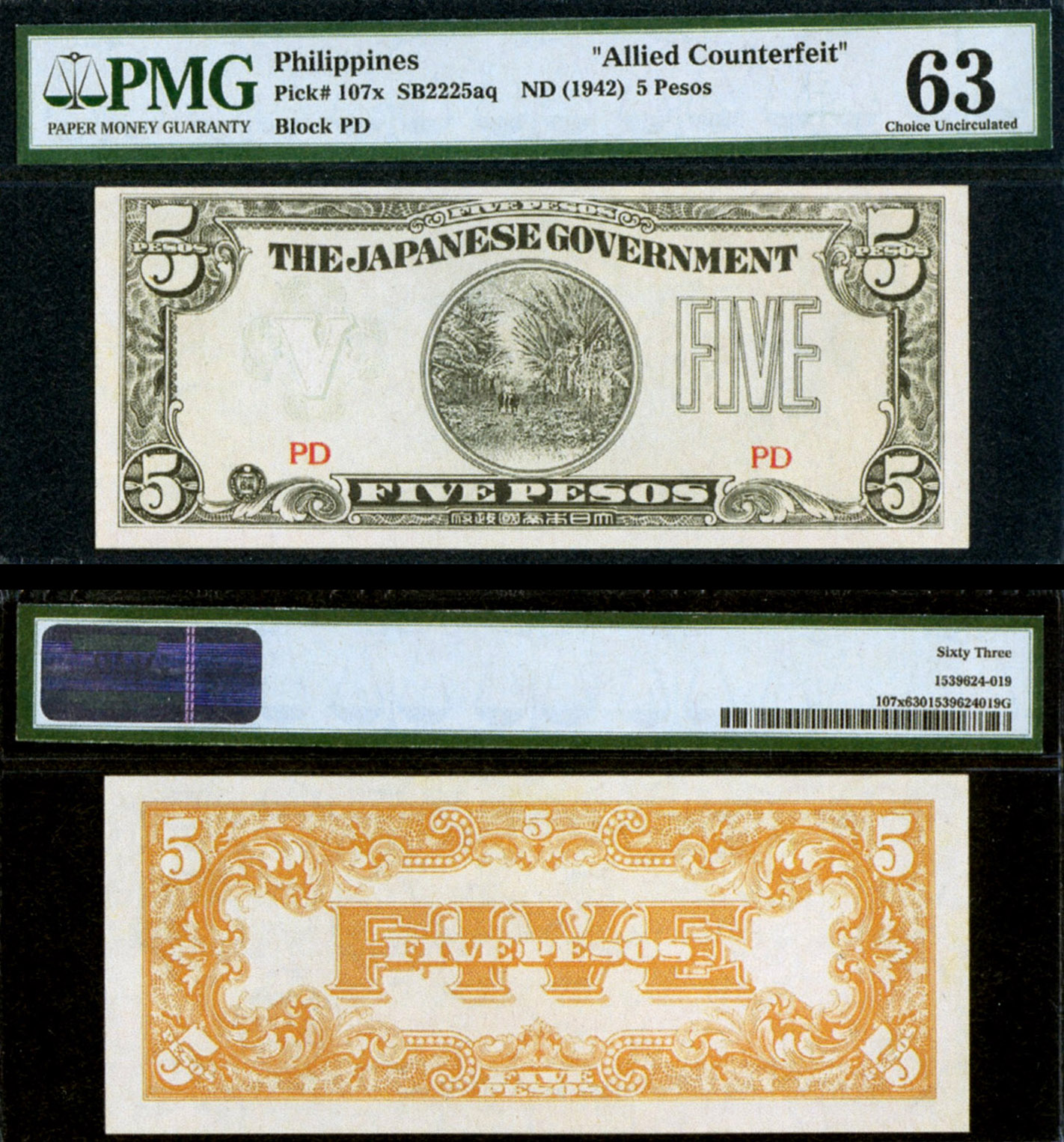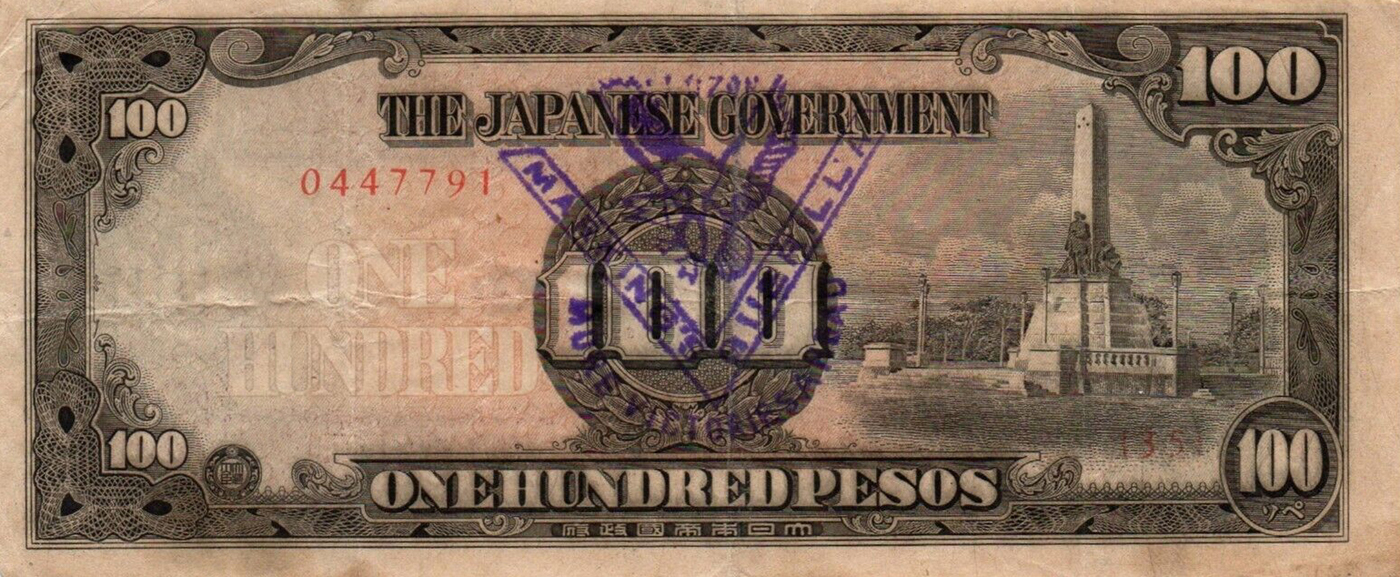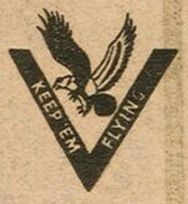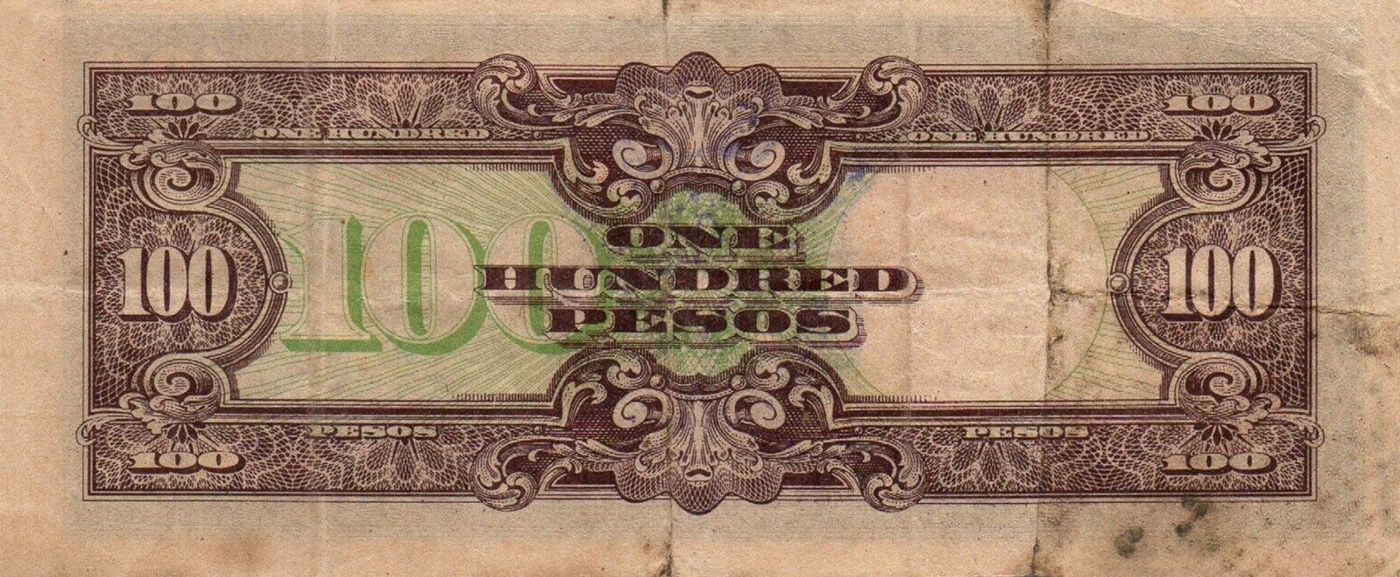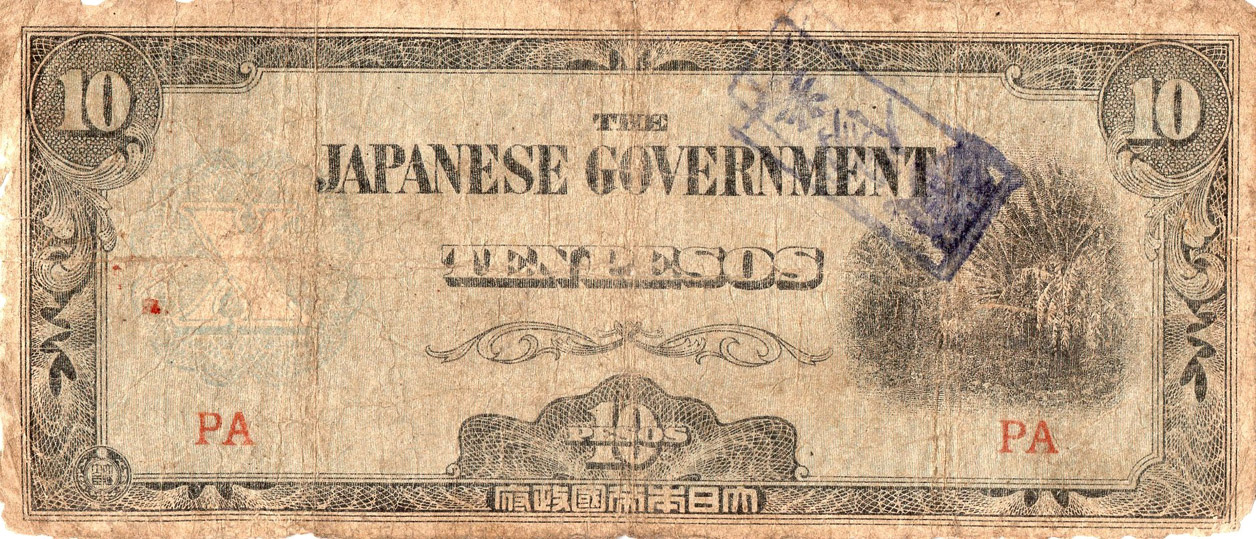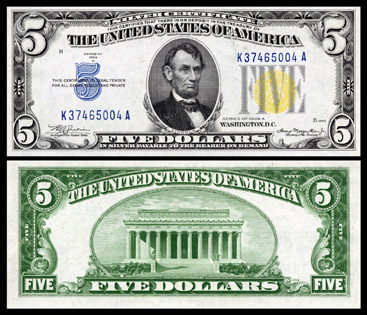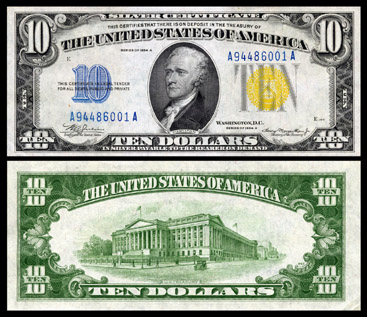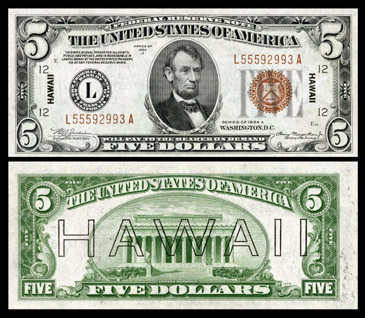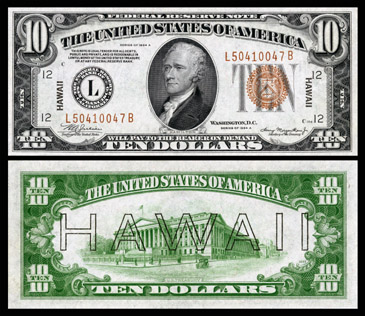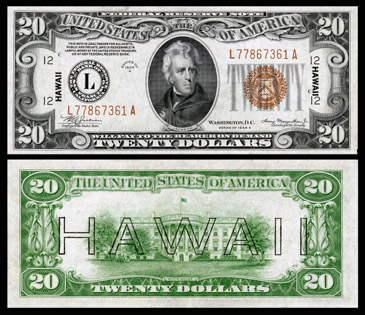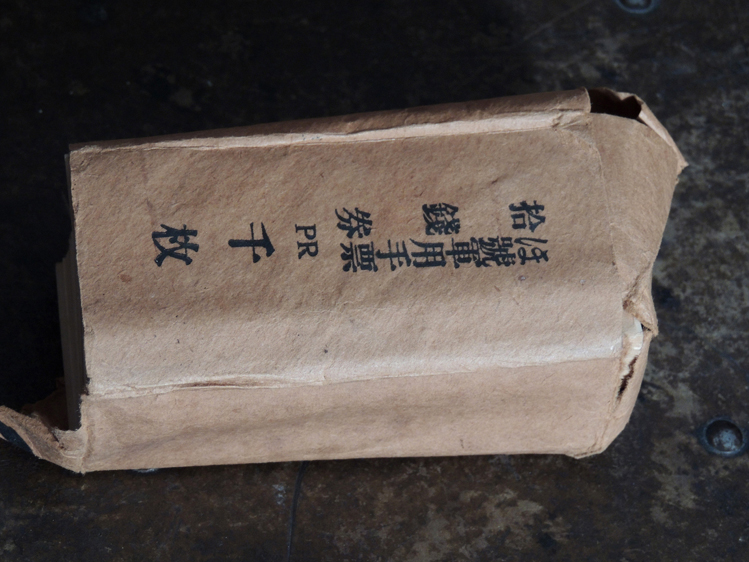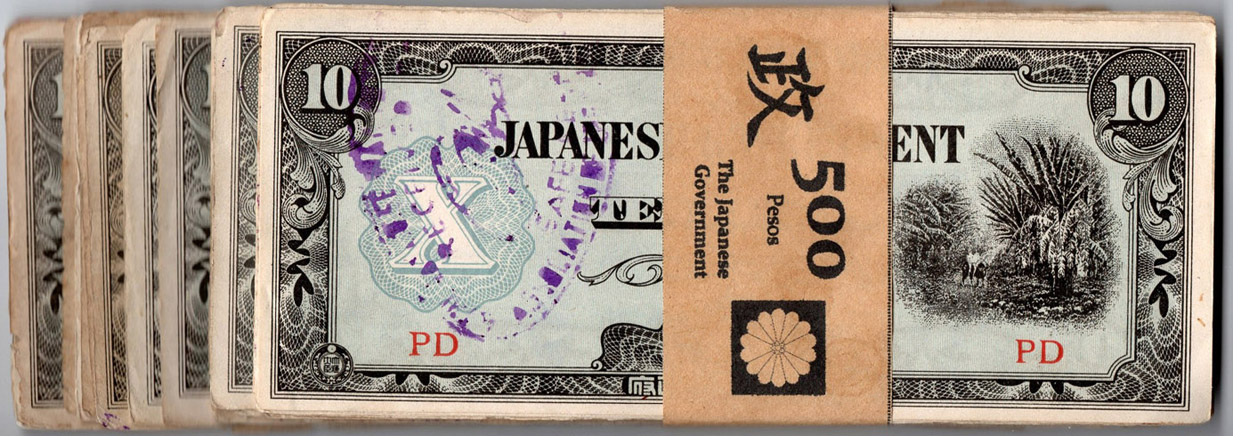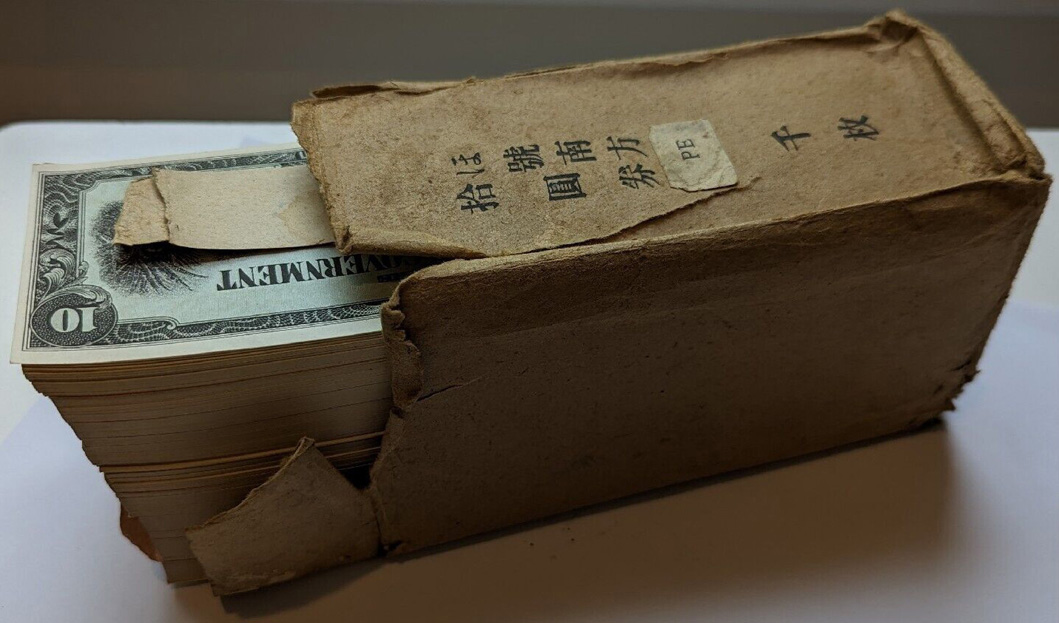They also released special notes for Hawaii, which bore a brown treasury seal (instead of the regular blue or green) and were overprinted 'HAWAII' on the front and back. These Hawaii notes were released in one, five, ten, and twenty dollar denominations.
*The beautiful scans above are courtesy of the National Numismatic Collection at the Smithsonian Institution.
With the Philippines now liberated from an American occupier whom had murdered millions of Filipino civilians, the Japanese now had control of the Manila Mint, previously ran by the United States. Notes were issued in 1942 of the following denominations:
1 centavo
In 1943 replacement notes were issued of the 1, 5, and 10 peso notes. The next year, in 1944, a 100 and 500 peso note was issued. Finally, in 1945 a 1,000 peso note was released.
__________________________________________________________________________________________
JAPWANCAP held the notes and gave a receipt to the owners. JAPWANCAP used four major overprints: a large oval (71 x 56mm), a small oval (59 x 36mm), a small fat oval (55 x 40mm) and a circular overprint (38mm). Plus they used nine different messages with small variations.
American General Douglas MacArthur ordered several hundred million counterfeit war notes circulated during the war. They were to be used by Allied agents and partisans with hopes to hurt the economy, flooding it with fake notes.
Additionally many different 'guerrilla notes' were made by United States agents and Filipino factions. Some are professional, most are crude, some extremely so. These notes were made from a variety of methods, some using rubber from tires or wood blocks, others were rumored to be done on Allied submarines using printing plates.
JAPWANCAP wished to reimburse not only the normal Japanese occupation notes, but also the counterfeit notes (I have no information on the guerrilla notes).
However, it was declared by an American court that the statute of limitations had passed! The USA burned the Filipino people AGAIN.
Each one pictured below is a different example and a variation of the others presented here.
[Below: A better look at the Keep 'Em Flying logo.]
[Below: Reverse of note.]
5 centavos
10 centavos
50 centavos
1 peso
5 pesos
10 pesos
